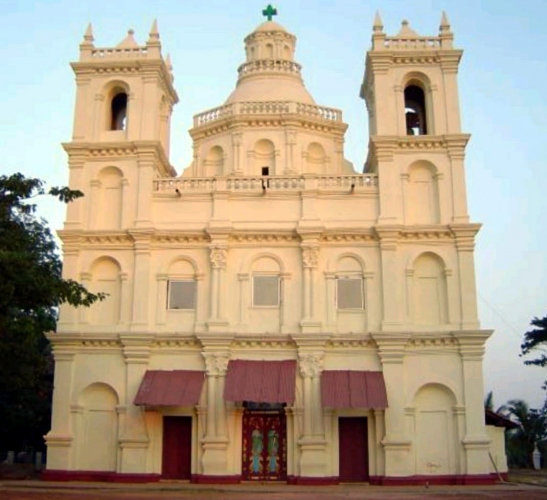The feast of St Stephen continues to be celebrated with great devotion and pomp and serves to strengthen the bond between the villagers

Santo Estêvão or St Estevam, also known as Juvem, meaning ‘island’, is about 18 kms from Panaji via Old Goa. The island got its name ‘Ilha do Santo Estevao or ‘Island of St Stevens’, after it was conquered by the Portuguese on December 26, 1510, under the leadership of D Afonso de Albuquerque. Since this date coincided with the feast of the proto-martyr of Christianity, St Stephen, it was named after the saint. The villagers celebrate the feast on this day.
THE VILLAGE
In the past, the island was known as Shakecho Juvo - the isle of vegetables for its long, seven-ridged, light green ladyfingers (bhendde), hence the natives were nicknamed as ‘Bhenddekars.’
Christianity was brought into the village by the Jesuit missionaries in 1550s. They built the church here in 1575; the biggest churches built by them during those times and dedicated it to St
Stephen.
The church was burnt twice: once by Sambhaji, a Maratha king, who conquered the island as part of the Maratha campaign against the Portuguese on November 25, 1683. However, it was rebuilt by the Jesuits and later burnt again by Sambhaji in 1739.
The present majestic structure atop the hill was erected in 1759 by a Comunidade and a villager named Gelasio dos Remedios Furtado. It is called Santo Estevao Church. On a hillock is a fort named after St Francis Xavier and adjacent to it is a majestic statue of Christ the King overlooking the island. The same was brought by Fr Antonio Leandro da Rosa from Rome in 1926 and installed on December 16, 1934.
There are two specific features of the village. First, the model of houses is unique in the village as the row of houses share common walls and common roofs. This was perhaps done by the villagers to seek help and assistance when attacked. Second, matrimonial relationships were confined within the village. This was probably due to the fact that the village has its own school and it was here that the ‘future alliances’ developed.
Besides till 1980s, there was no connectivity to life beyond their land since it was surrounded by water on all sides, except by canoes and later by
ferries.
THE SAINT
Santo Estêvão is perhaps the only village in Goa where the Catholic community celebrates three feasts in a row - Christmas on 25 December, Feast of St Stephen, the patron of the Church on 26 December and Feast of Christ the King on 27 December.
Stephen, as per the Acts of the Apostles, was the most distinguished of the Greek-speaking Jew who became a Christian. He was the first of the seven deacons appointed to help the apostles in preaching, baptising and distributing alms. He devoted himself to the service of the Greek converts. He regularly preached in synagogues fearlessly, which aroused hatred from his enemies. The Jews then brought false charges against him and put him to death by stoning. Thus he became the first martyr of the Catholic Church.
THE FEAST
The feast of the patron saint is a big event for the catholic community of Juvem. The event is like going back to their roots and hence a ‘homecoming’ for all those who have migrated from the village to neighbouring villages or beyond for various reasons.
These do not fail to attend at least one church service in the morning and visit their relatives in the village and socialise with them over a drink and snacks or take part in the festive lunch. Consequently, the bond that exists between them gets strengthened. The villagers are known as tarvotti (seafarers), as a number of youngsters work on ships. Hence many of these try their level best to be with their families for the feast. There is also an evening programme in the evening in the church campus, where all do not fail to attend. The feast of St Stephen continues to be celebrated with great devotion and pomp and serves to strengthen the bond between the villagers. This year, I am told that there won’t be the usual High Mass, instead Masses will be celebrated during the day so that everyone in the village gets an opportunity to
participate in it.
(The writer is former director of Thomas Stephens Konknni Kendr at Porvorim)